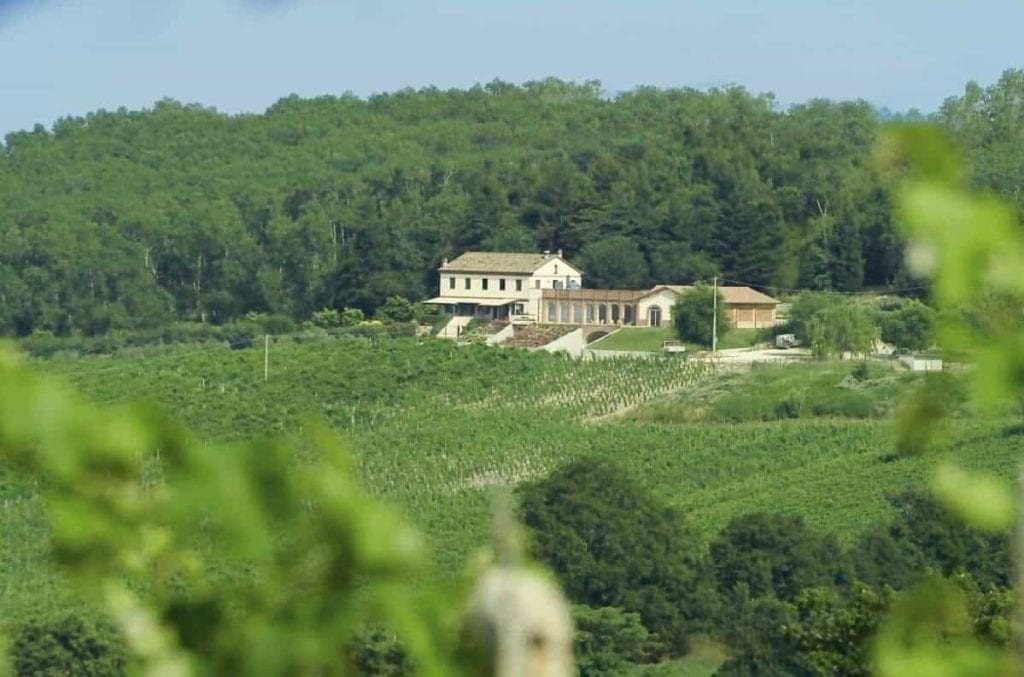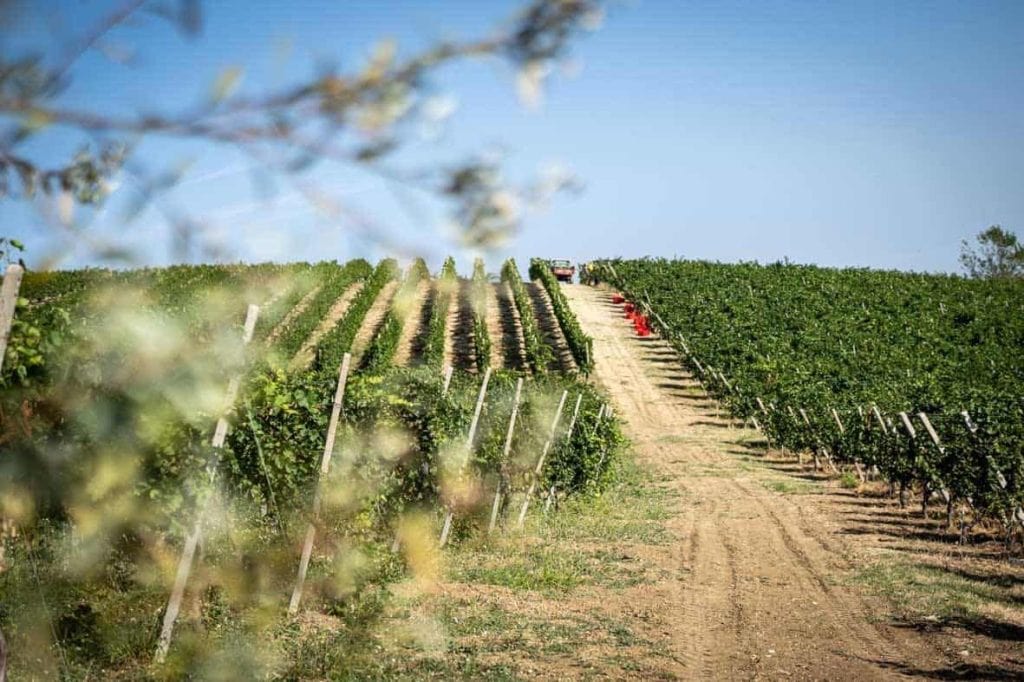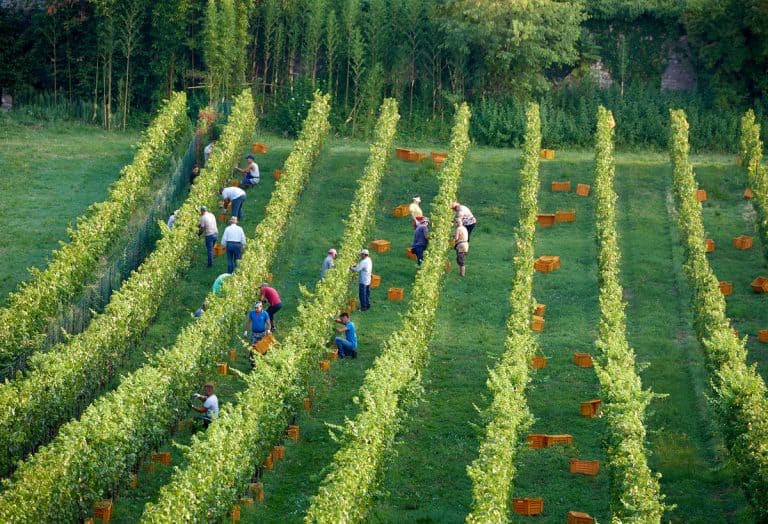Changing to survive could be the essence of the cooperative wine world’s current situation, amidst a deep crisis in global wine consumption. Recent events — albeit very different from one another — from Moncaro to Terre d’Oltrepò compel us to seriously consider the future of this form of governance, which, at present, is undeniably struggling. This is not only an Italian issue: in France, 20% of cooperative wineries are currently described as "in difficulty" by Vignerons Cooperateurs, the association representing cooperative wineries. It’s no coincidence that cooperatives, including Italian ones, are pushing in Europe for vineyard uprooting schemes to ease the burden on struggling wineries (and to access funding). Let’s start by examining the year’s end to put things in order.

A challenging year for cooperative wineries
The most striking case is that of Terre Cortesi-Moncaro. After months of intense challenges — to put it mildly — the largest wine cooperative in the Marche region went into liquidation (or, plainly speaking, went bankrupt) with debts amounting to 38 million euros. In Sicily, troubles are also apparent. This summer, in the midst of the harvest season, the Colomba Bianca cooperative had to step in with a life-saving agreement to support the Europa cooperative and its members, allowing them to continue their work and deliver grapes to the enterprise led by Dino Taschetta.
To these cases of obvious difficulty, we can add instances pointing to internal transformation, if not outright evolution, within the “cooperative model.” In Soave, last March, the Cadis 1898 cooperative replaced its director Wolfgang Raifer with Alberto Marchisio after a tumultuous vote of no confidence, reorganising its internal structure. More recently, last week, Caviro (which posted €423 million in revenue for 2022-23, with stable financial indicators) announced its focus on premium wines, dividing the cooperative sector (including the Tavernello brand) from its estates. Another significant move is the recent decision by Terre d’Oltrepò president Umberto Callegari, who, in a letter to employees, announced the establishment of a joint-stock company entirely controlled by the cooperative — effectively a hierarchical transformation.

Is the cooperative model in crisis?
The above cases show some turmoil in the cooperative sector and differing strategies for handling it. The question is pressing: has the cooperative sector gone into crisis? We asked Professor Alberto Mattiacci, professor of Marketing & Business Management at Sapienza University and Luiss Business School, as well as the Italian representative on the EU’s Wine Market Observatory within DG Agri (and lecturer for the Gambero Rosso Academy’s advanced course "Wine of the Future").
“When, as today, there is a profound shift across many market components — from consumers to retailers, for instance — there’s talk of crisis and questions arise about whether it’s structural or temporary. I think it’s too soon to label the current moment a ‘structural crisis,’ as the message from markets could indicate something different: some elements have matured and shape a different scenario, which requires acknowledgment and adaptation in organisational structures and market behaviours. For example, we now have a better understanding of the Chinese market and realise it won’t be the grand festival Europeans once imagined. Another example? Wine is no longer ‘glamorous’ in the way it was in the ’90s; it’s simply one of many alcoholic beverages. With many factors maturing simultaneously, everyone is facing difficulties. Particularly vulnerable, in my view, are small operations (with only a VAT number to identify them as businesses) and cooperatives. The latter, in particular, face adaptation challenges due to their inherent structure.
Before asking if the cooperative model is in crisis, I ask if there is even *a* cooperative model, or rather a variety of models. That said, cooperation is a valuable asset but carries the typical weaknesses of all democratic organisations. For cooperatives to compete with monocratic competitors, they must adopt governance and operational rules that rival their competitors’: quicker, as they address shareholder interests from the outset; and more effective, by employing professional managers accountable for results, not just diplomacy skills in mediating among stakeholders. The issue isn’t the legal form; rather, cooperatives must equip themselves with effective governance and leaders who can navigate an ever-changing market landscape.”
Lengthy decision-making in cooperatives
If there is a burden for social enterprises, it lies in lengthy decision-making processes, often influenced by individuals who may lack vision and analytical capacity, Mattiacci observes. “Cooperation involves complex decision-making dynamics, while multinationals empower CEOs to make decisions in just two meetings. The competitive conditions are unfair. In models where too many roosters are in the henhouse, there’s a risk of crises like the one faced by Moncaro.”ù

Advantages of a joint-stock company over a cooperative
Mattiacci reflects on the “transformation” of Terre d’Oltrepò into a form of hierarchical cooperative through the establishment of a wholly owned joint-stock company. “It’s a feasible strategy that could work to meet the need for a legal structure enabling different engagement with financial markets: for example, a joint-stock company has access to the full range of funding options — from selling shares to issuing bonds — whereas a cooperative faces certain limitations. Transformation may thus be a wise choice to overcome cooperative model restrictions.”
Another point is the streamlining of procedures: “The joint-stock company inherently has a more efficient and effective governance structure than cooperatives, whose decision-making processes tend to be cumbersome, more often resulting from internal compromises than from market responsiveness. Unfortunately, in such setups, the actions necessary for competition may not align with the desirable actions for internal harmony among members,” concludes the economist.


 Meloni: "Tariffs? If necessary, there will be consequences. Heavy impact on agri-food sector"
Meloni: "Tariffs? If necessary, there will be consequences. Heavy impact on agri-food sector" The Government honours the greats of Italian cuisine, from Bottura to Pepe. Massari: "Thank you, Meloni, the only one who listened to us"
The Government honours the greats of Italian cuisine, from Bottura to Pepe. Massari: "Thank you, Meloni, the only one who listened to us" "We must promote a cuisine that is not just for the few." Interview with Massimo Bottura
"We must promote a cuisine that is not just for the few." Interview with Massimo Bottura Wine was a drink of the people as early as the Early Bronze Age. A study disproves the ancient elitism of Bacchus’ nectar
Wine was a drink of the people as early as the Early Bronze Age. A study disproves the ancient elitism of Bacchus’ nectar "From 2nd April, US tariffs between 10% and 25% on wine as well." The announcement from the Wine Trade Alliance
"From 2nd April, US tariffs between 10% and 25% on wine as well." The announcement from the Wine Trade Alliance






